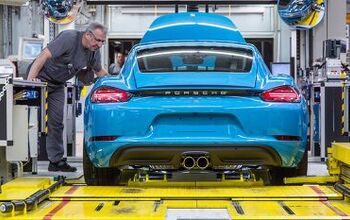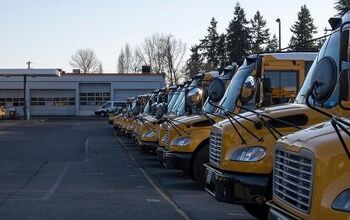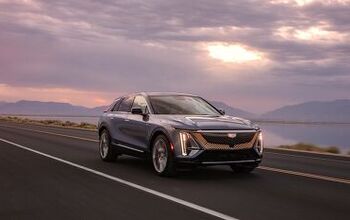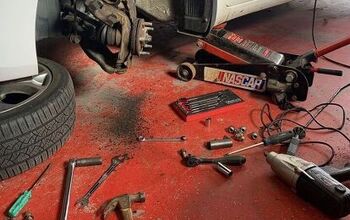Is China's Cheap Labor A Thing Of The Past?
The prospect of a Chinese auto industry growing at insane speed thanks to a booming market and resiliently low wages has long kept auto industry execs up at night, most notably inspiring Sergio Marchionne’s acquisition of Chrysler. But basic economic principles dictate that you can have a high rate of growth or low wages… but not both. Growth inevitably drives inflation, which drives up wages, which in turn slows growth. And according to a report in the Wall Street Journal [sub], that dynamic is already taking hold.
Jae-Man Noh, head of Hyundai’s joint-venture operations in China, said average manufacturing-worker wages in China—about 27,000 yuan ($4,200) a year per worker in 2009—are likely to double by 2015 from current levels.
Auto makers are expected to be affected as much as other industries by the trend, if not more, Mr. Noh said, adding that wage costs for many foreign auto manufacturers already have doubled in less than a decade. He said that a rival foreign auto maker that Hyundai has researched has seen worker wages in China rise to 49,000 yuan a year per worker in 2010, up from 24,500 yuan a year in 2003.
“We need to let go of our perception that the Chinese market is a low-cost production base,” Mr. Noh told a group of reporters at Hyundai’s office in Beijing. He didn’t offer specifics on Hyundai’s wage costs in China.
And though the laws of supply and demand made this development inevitable, the story of the decline of China’s low-wage manufacturing base is a lot more interesting than you might think. After all, economic and historical forces may seem mechanical in the abstract, but on the ground level they work in dramatic, disruptive ways.Japanese companies see the Chinese as crucial consumers of their goods to make up for a shrinking and aging market at home. Some of the most profitable Japanese companies, like Fast Retailing, which runs the budget clothing line Uniqlo, have relied on production in China since the 1990s to keep prices low.
“Japan is starting to realize that the age of cheap wages in China is coming to an end, and companies that looked to China only for lower costs need to change course,” said Tomoo Marukawa, a specialist on the Chinese economy at Tokyo University.
And make no mistake, foreign firms clearly have more to lose from newly-empowered workers, as the BBC reportedThe BBC’s China editor Shirong Chen says the government has tolerated strikes at foreign-owned plants, which are obliged to respect workers’ rights, but maintains strict control at Chinese-owned factories for fear of widespread social unrest.But for foreign firms, the protest must have seemed like “widespread unrest.” As LaborNotes documents, in an in-depth study of the strike wave
the events at Honda Nanhai triggered a chain reaction among workers in auto supply and electronics factories throughout the Pearl River Delta. According to the Guangzhou Federation of Trade Unions, more than 100 strikes occurred, of which only a small number were reported in the media. Around Toyota’s ultramodern factory in Guangzhou Nansha, eight of 14 core suppliers had labor conflicts. And action spread to other areas: workers in several electronics factories near Shanghai and at a Toyota supplier in Tianjin struck for several days.
The strike movement not only scared multinational corporations in China, it challenged the system of labor control. Typically, tacit coalitions between capitalists and local government rule over conditions inside the factories. Unions play a role in former state-owned enterprises and flagship joint ventures, but not in most private companies. Often, local governments back up violations of labor law by major investors, as has been documented in many cases for suppliers to multinationals such as Wal-Mart, Apple, and Nike.
But under conditions of rapid growth and highly modern production, the methods of control have become ineffective. Hundreds of labor conflicts occurred in the wake of the global economic crisis, affecting millions of Chinese workers in 2008 and 2009. Following the recovery, workers are seeking a voice. Workers’ wages have been falling continuously as a share of China’s national income since the 1990s, when the shift toward capitalism really took off, and the government is now officially calling for higher wages in order to raise domestic demand.
If underlying economic fundamentals have been pushing China towards wage inflation for some time, the dam broke in last summer’s wave of strikes. Now Hyundai is publicly acknowledging the reality that every foreign auto firm must face: low costs alone aren’t reason enough to be in China. But as the WSJ notes, even though the glory days of cheap Chinese labor may be over, Hyundai (and others) still have plenty of incentive to stick with their Chinese market plans.
China still offers other draws, including strong economic growth, an increasingly affluent population and a quickly growing car culture.
Plus, Hyundai’s average factory labor cost in China is still one-fifth of that in South Korea, Mr. Noh said. What concerns him most is the dramatic rate of increase, he said.
This trend is “inevitable” as the Chinese economy grows and society improves, Mr. Noh said.
Despite rising labor costs, China’s auto exports will continue to increase in part because of excess auto-production capacity in the country, he said. China’s central government will also continue to focus on automotive exports, he said.
The growth of the Chinese car market in recent years has been nothing short of freakish, and was overdue for this kind of correction. But even though costs are increasing, China’s continued growth and still-low costs relative to other manufacturing centers continue to make it an attractive target. Foreign firms just have to work a little harder than they used to, and as Chinese wages rise, workers there and around the world will only benefit from a narrowing assembly cost gap.
More by Edward Niedermeyer
Latest Car Reviews
Read moreLatest Product Reviews
Read moreRecent Comments
- ToolGuy If these guys opened a hotel outside Cincinnati I would go there to sleep, and to dream.
- ToolGuy Michelin's price increases mean that my relationship with them as a customer is not sustainable. 🙁
- Kwik_Shift_Pro4X I wonder if Fiat would pull off old world Italian charm full of well intentioned stereotypes.
- Chelsea I actually used to work for this guy
- SaulTigh Saw my first Cybertruck last weekend. Looked like a kit car...not an even panel to be seen.

































Comments
Join the conversation
I hope most of the people in China become self-empowered because of this - because they acquire the skills and the economy allows and depends on them using it. I can't think of a better protection for them (and us) from what has gone on in almost all of the world's recorded history.
My Adidas shoes are made in Vietnam. The Samsung phone I bought recently has also everything made there except for the battery which says Made in Korea Finished in Vietnam (whatever the heck that means.) Our Samsung cheapo washing machine and refrigerator came from Thailand. And for the love of God, don't buy kitchen appliances from Samsung! You'll regret it. Stick to their AV and IT products. One of my fave quotes from the internets: For America to compete with 3rd world countries, it has to become one. Rejoice!!!